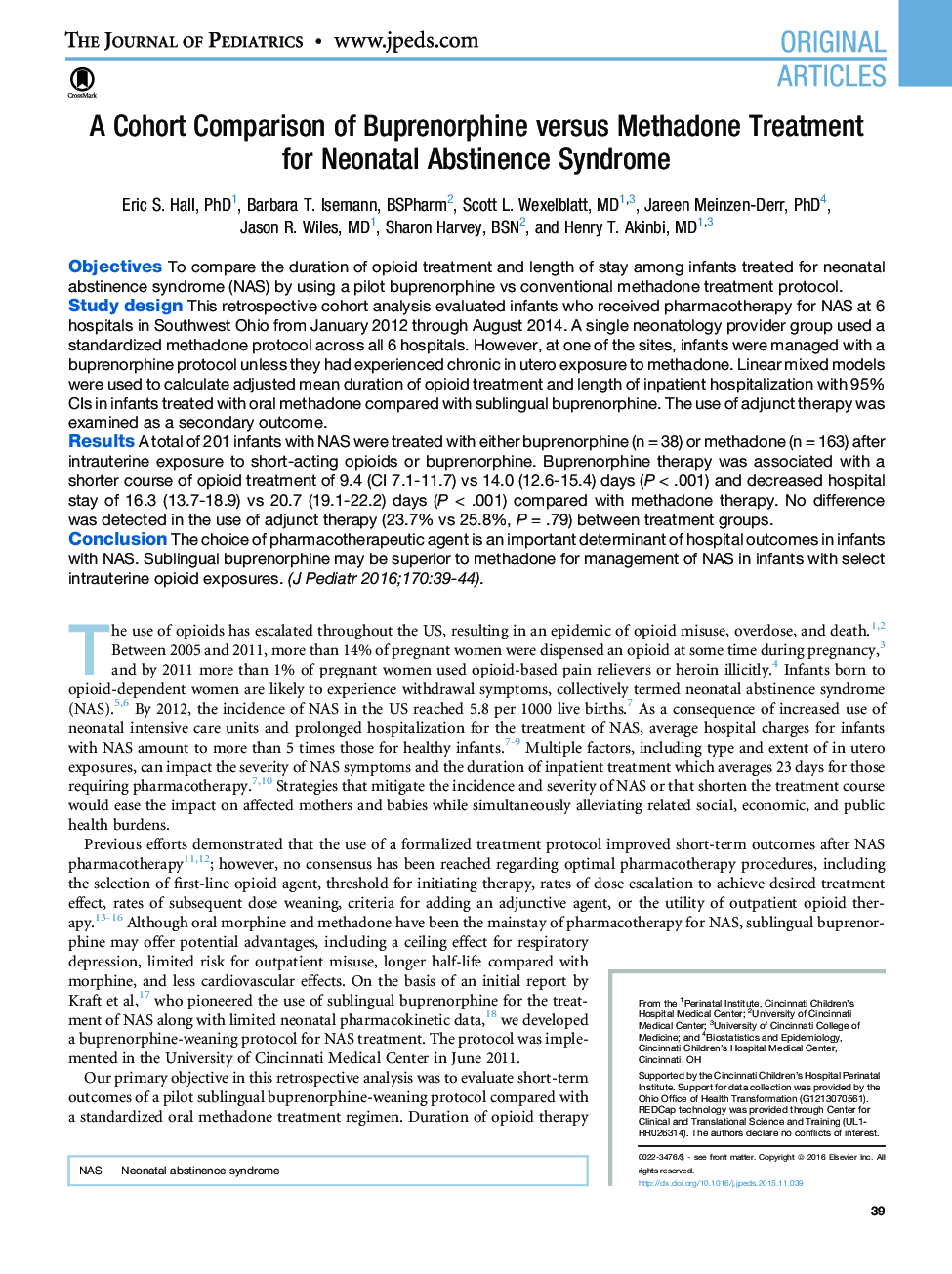| Article ID | Journal | Published Year | Pages | File Type |
|---|---|---|---|---|
| 6219051 | The Journal of Pediatrics | 2016 | 7 Pages |
ObjectivesTo compare the duration of opioid treatment and length of stay among infants treated for neonatal abstinence syndrome (NAS) by using a pilot buprenorphine vs conventional methadone treatment protocol.Study designThis retrospective cohort analysis evaluated infants who received pharmacotherapy for NAS at 6 hospitals in Southwest Ohio from January 2012 through August 2014. A single neonatology provider group used a standardized methadone protocol across all 6 hospitals. However, at one of the sites, infants were managed with a buprenorphine protocol unless they had experienced chronic in utero exposure to methadone. Linear mixed models were used to calculate adjusted mean duration of opioid treatment and length of inpatient hospitalization with 95% CIs in infants treated with oral methadone compared with sublingual buprenorphine. The use of adjunct therapy was examined as a secondary outcome.ResultsA total of 201 infants with NAS were treated with either buprenorphine (n = 38) or methadone (n = 163) after intrauterine exposure to short-acting opioids or buprenorphine. Buprenorphine therapy was associated with a shorter course of opioid treatment of 9.4 (CI 7.1-11.7) vs 14.0 (12.6-15.4) days (P < .001) and decreased hospital stay of 16.3 (13.7-18.9) vs 20.7 (19.1-22.2) days (P < .001) compared with methadone therapy. No difference was detected in the use of adjunct therapy (23.7% vs 25.8%, P = .79) between treatment groups.ConclusionThe choice of pharmacotherapeutic agent is an important determinant of hospital outcomes in infants with NAS. Sublingual buprenorphine may be superior to methadone for management of NAS in infants with select intrauterine opioid exposures.
